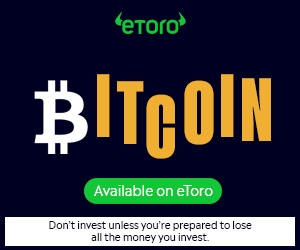Let’s face it — the AI + crypto narrative has been overhyped for years. But every now and then, a project emerges that actually delivers on the promise. Bittensor is one of those rare exceptions.
Since its mainnet went live in March 2023, Bittensor has evolved into something far more compelling than just another blockchain experiment. It’s a decentralized protocol built to support a permissionless machine learning economy — and it's powered by TAO, a token that rewards intelligence, not just speculation.
At a time when centralized AI services are under regulatory scrutiny and GPU bottlenecks are the norm, Bittensor offers something different: an open, scalable, and censorship-resistant network for AI contributors worldwide.
What Makes Bittensor Stand Out?
Unlike most tokens that exist for governance or payments, TAO is the lifeblood of a working, on-chain intelligence market. That might sound abstract — until you realize that every node in the network, whether it's generating text or solving prediction tasks, is ranked based on performance. Better output? Higher rewards.
And here’s what’s interesting: the rewards aren’t decided by a centralized authority. They’re determined by validators — other nodes that evaluate outputs in real time and distribute TAO accordingly.
It’s not just theory, either. A friend of mine, a machine learning engineer out of Boston, began contributing to a vision subnet in late 2024. Within weeks, his transformer-based model was earning daily TAO, simply by outperforming other models in the same category. No grant proposals. No platform fees. Just compute, submit, get scored, get paid.
Not Your Average Crypto — It’s Proof of Intelligence
Projects like Fetch.ai and Ocean Protocol focus more on orchestrating or selling data. Bittensor flips the script by trying to quantify intelligence itself. Wild idea, right? But it’s already happening.
Where Bitcoin rewards hash power and Ethereum rewards staking, Bittensor rewards contribution to collective machine learning. It's a network where competition drives better models, and the most useful outputs earn real value — not likes or upvotes, but TAO.
This new concept — “Proof of Intelligence” — is less about ideology and more about outcomes. If your AI model helps the network, you get paid. Simple as that.
Why TAO Has Real Economic Weight
Let’s talk tokenomics — because this part matters.
There’s no pre-mine. No early VC allocations. And no open faucet-style inflation. TAO follows a capped supply model, with a hard limit of 21 million tokens, similar to Bitcoin. As of June 2025, around 8.8 million TAO are in circulation.
That scarcity, combined with growing network demand, creates a clear value framework. It’s not just a coin you trade — it’s a digital asset backed by AI utility.
In fact, if you’ve staked TAO through validator nodes in the past 6 months, you’ve likely seen returns in the 15% APY range — depending on subnet performance and network conditions. That’s not yield farming or protocol bribing. That’s performance-based compensation.
Personally, I picked up my first TAO bag in early 2024, not because of hype (though the April pump to $760 definitely caught my eye), but because the fundamentals just made sense. Active GitHub repos. Transparent emissions. Real contributors, not anonymous ghost teams.
Strategic Importance for US Crypto Users
Here’s where it gets interesting for US-based investors: Bittensor isn't just a bet on a new token — it’s a stake in what some analysts now call the “AI compute economy.”
As tools like ChatGPT, Sora, and other LLMs become essential infrastructure, the centralized systems running them are facing pressure — from copyright lawsuits, data hoarding, and scaling limits.
Bittensor? It sidesteps all that. The network’s open by design, and the incentives are baked into the protocol. No permissions, no API keys, no gatekeeping.
Here are three ways users in the US are participating right now:
- Staking TAO with wallets like Atomic or Polkadot.js
- Trading TAO on exchanges such as Binance, KuCoin, and Coinbase
- Running nodes or developing subnets, if you’ve got the skills
Each option has different risks and rewards. But what they all share is exposure to a system where intelligence — not marketing — drives token value.
A Look at Price Trends and What Drives Them
If a major subnet starts outperforming — or if a GitHub pull request dramatically boosts model throughput — we tend to see activity spill over into the token’s price. That’s not speculative noise. That’s cause and effect.
So, is Bittensor the future of AI and crypto? That’s a big claim — and I wouldn’t go that far just yet.
But what’s clear is that it offers something different. A protocol where usefulness is measurable. A token that rewards participation. And an economy that doesn’t rely on faith alone, but on outputs that work.
On one hand, TAO still faces challenges — technical onboarding is steep, and liquidity can be thin during market corrections. On the other, the fundamentals are among the strongest I’ve seen in this niche.
Bottom line? If you’re tired of narrative-only projects and want something that’s actually building — TAO’s worth watching. And maybe, just maybe, worth earning too.
What Is Bittensor and How Does TAO Work?
Bittensor is an open-source protocol that rewards participants for contributing useful machine learning outputs. The native token, TAO, fuels this decentralized AI network. Contributors run validator or server nodes, earning TAO based on informational value — a model officially recognized as a leap in blockchain utility.
In a 2025 developer report, TAO was ranked among the top 5 AI-integrated cryptocurrencies for utility-based staking.
Users can access bittensor via platforms like Atomic Crypto Wallet, or trade TAO crypto on US exchanges like Binance, Coinbase, and Kraken. The system ensures transparency, trustlessness, and open-market dynamics.
TAO Crypto: Price Stats and Market Insights (2025)
As of June 5, 2025:
- Bittensor price: $426.84 per TAO
- All-time high: $712.41
- Market cap: $3.8 billion
- Circulating supply: 8.8 million TAO
- Daily trading volume: $166.8 million
- FDV (Fully Diluted Valuation): $8.9 billion
According to CoinGecko, bittensor is outperforming the broader crypto market by over 3.4% weekly.
These figures reflect growing demand in the US crypto sector, particularly from users seeking exposure to AI-driven networks with long-term scalability.
TAO vs. Competing AI Cryptos
|
Token |
Current Price |
Market Cap |
7-Day Performance |
Exchange Availability |
|
Bittensor (TAO) |
$426.84 |
$3.8B |
+6.4% |
Binance, KuCoin, Coinbase |
|
Render (RNDR) |
$8.45 |
$3.1B |
+5.9% |
Coinbase, Binance |
|
Fetch.ai (FET) |
$2.10 |
$1.7B |
+4.2% |
Kraken, Binance |
TAO leads in decentralization depth and incentivized AI collaboration — a key differentiator compared to other smart contract platforms.
Understanding the Bittensor Price Chart
If you’ve ever stared at a bittensor price chart on CoinGecko, TradingView, or a CEX like KuCoin, you’ve probably asked the same question I did early on: “Why is TAO doing its own thing while Bitcoin is flatlining?”
Here’s the truth: TAO crypto doesn’t behave like traditional Layer-1 coins, and that’s exactly why understanding its chart requires a more nuanced approach.
How to Read the TAO Price Chart
First, the basics:
- X-axis represents time: You can toggle views between 1-day, 7-day, 1-month, or year-to-date. Each timeframe tells a different story — daily for volatility, monthly for trends, YTD for fundamentals.
- Y-axis shows the price of TAO in USD
But here's where it gets interesting — TAO’s movement often decouples from Bitcoin (BTC), and even from broader crypto indices like the Total Market Cap (TOTAL2).
Final Take: Is TAO Crypto Worth Keeping an Eye On?
If you’re dabbling in AI-powered crypto, Bittensor (TAO) should probably be on your radar. It’s not just riding the hype — the fundamentals are solid, adoption’s ticking up, and the reward structure? Transparent and performance-based. That’s more than you can say for half the tokens on the market.
Now, whether you’re storing TAO in Atomic Crypto Wallet, trading it on Binance, or digging into validator metrics — understanding where the Bittensor price stands today gives you a leg up for what’s coming next.
So, thinking of getting involved? Here's a simple game plan:
✅ Consider dollar-cost averaging into TAO — slow and steady
✅ Use Atomic Wallet or a secure Polkadot-based option for storage
✅ Track TAO on CoinGecko, TradingView, or directly through the Bittensor dashboard
✅ And hey — maybe bookmark this page for no-BS weekly updates
Because if the AI + crypto narrative keeps growing (and it likely will), TAO might just be one of the few projects actually delivering real value.





 usdt
usdt xrp
xrp

